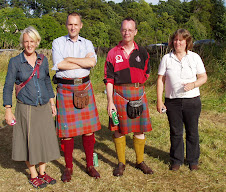Another
relative quickie – I am going walking today with our niece, to whom I will at
last present the Mourning Shawl. I’ll try to get a pic.
And she’ll need
the yarn-care instructions that came in the box…
So before
mid-morning I must make some sandwiches to leave for my husband’s lunch, and
invent a supper for my happily weary self to make this evening. Left-over
mutton with onion sauce?
It doesn’t
sound like much, but that sort of thinking and trotting about takes me longer and longer these days.
I’m roaring
on with the Brownstone. A couple more days to finish the body?
Non-knit
The
astronomy is getting well beyond me. Jean, I thought the sun was
always overhead at the equator, where they have more or less 12-hours-light,
12-hours-dark all year round. But what about the rest of us and the equinoxes?
For us here in the northern hemisphere, the sun will be at its nearest to
directly-overhead at the summer solstice, won’t it? And at the winter solstice,
it struggles to get above the southern horizon. Where is it at the equinox? And how does that compare with where it is for everybody else in the world? Three-dimensional geometry was where mathematics and I parted company.
Lisa, the calligraphy is an appliquéd
throw – I guess you’d call it – Helen gave us, from Cairo Greece
Everybody
we’ve ever met is coming to see us in November, starting with Big Thomas this
weekend.





My friend very kindly translated your Chinese yarn washing instructions for you:
ReplyDeleteThis is an easy one. It’s just telling you that this is made of good natural wool by good advanced equipment which make you feel soft and comfy. Then it’s machine washable, insect resistant, no shrinkage, no yarn balls ( I don’t know the term of it. It’s those balls after rubbing and worn off ), soft , elegant and easy to take care of.
This is from China, I suppose as it’s in simple Chinese.
Hope this helps!
Beverly in NJ
I wish I could be with you and explain the solstice/equinox thing with a torch and an orange, the way my Mum did for me. It is so clear when you see it done with solid objects - she was a wonder at explaining things like that.
ReplyDeleteMind you, I think I was a bit of a trial - she kept telling me the worst one I chucked at her was, aged four, sitting in the bath, "Mummy, what is electricity?"
'Nother try at explaining this thing - it is helping me to remember the geography from way back.
ReplyDeleteThe sun is directly overhead at noon at the equinoxes on the equator. This is when it treats the whole planet the same from the point of view of day length. The rest of the year it is near-as-dammit overhead between the tropics which are the lines which mark the farthest north and south that it does overhead. This is the bit of the world that has very little variation in day length. It hits those lines at the solstices. When it is on the Tropic of Capricorn - the southerly one - they have maximum day length in the southern hemisphere, and that is when we get our shortest day, and also, because the sun is doing such a good job down under, it can't be seen at all above the Arctic Circle.
It really does come down to who's turn it is to have it!
I think what I said before was technically wrong. The sun doesn't actually go to the other side of the center of the sky away from the equator; but it does go to the other side of its equinoctial path, which is not quite the same thing.
ReplyDeleteSome decades ago, an artist in New York City set up a magnifying glass on the roof of his building. Each day, it burned the sun's path into a new piece of wood. At the end of I think two years (because of allowing for cloudy days), he put the curved shapes together and had a literal track of the sun's path over the course of a year. It was essentially a figure eight, with the straight parts being the equinoxes. At the equinox, the sun's path across the sky is a straight line from east to west, but away from the equator it isn't overhead; instead, it's tilted.
The curves for winter and summer added up to spirals that spiraled in to circle a center area (solstice) and out again. On either side of the equinoxes, the curves were opposite- that was when the sun moved to the opposite side of the equinoctial path.
I'm sorry I confused you, but in a way I'm glad because now I think I understand it better.
Today's newsletter from IK's Knitting Daily announced a new DVD and/or downloadable video that may interest you. Knitting Daily Workshop: Brioche Knitting Basics
ReplyDeletewith Mercedes Tarasovich-Clark. Looks interesting and you could put it on your ipad.